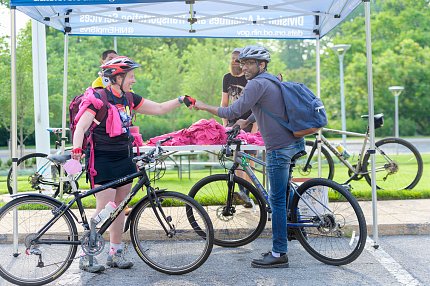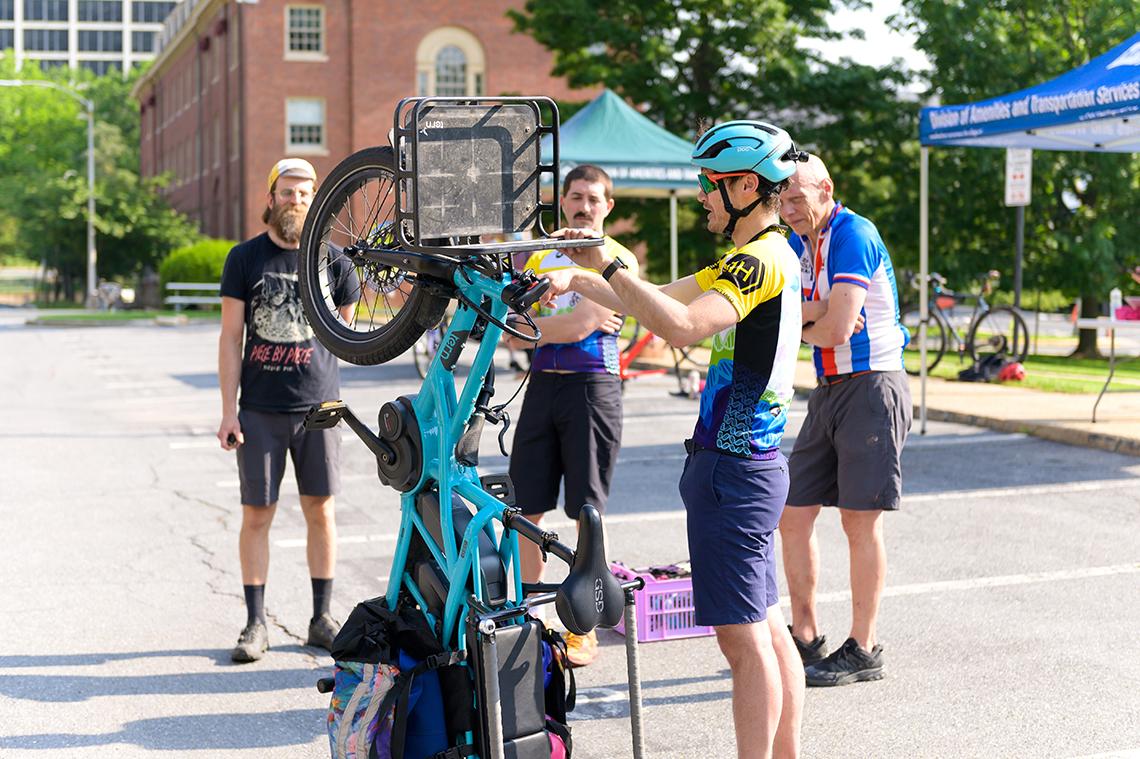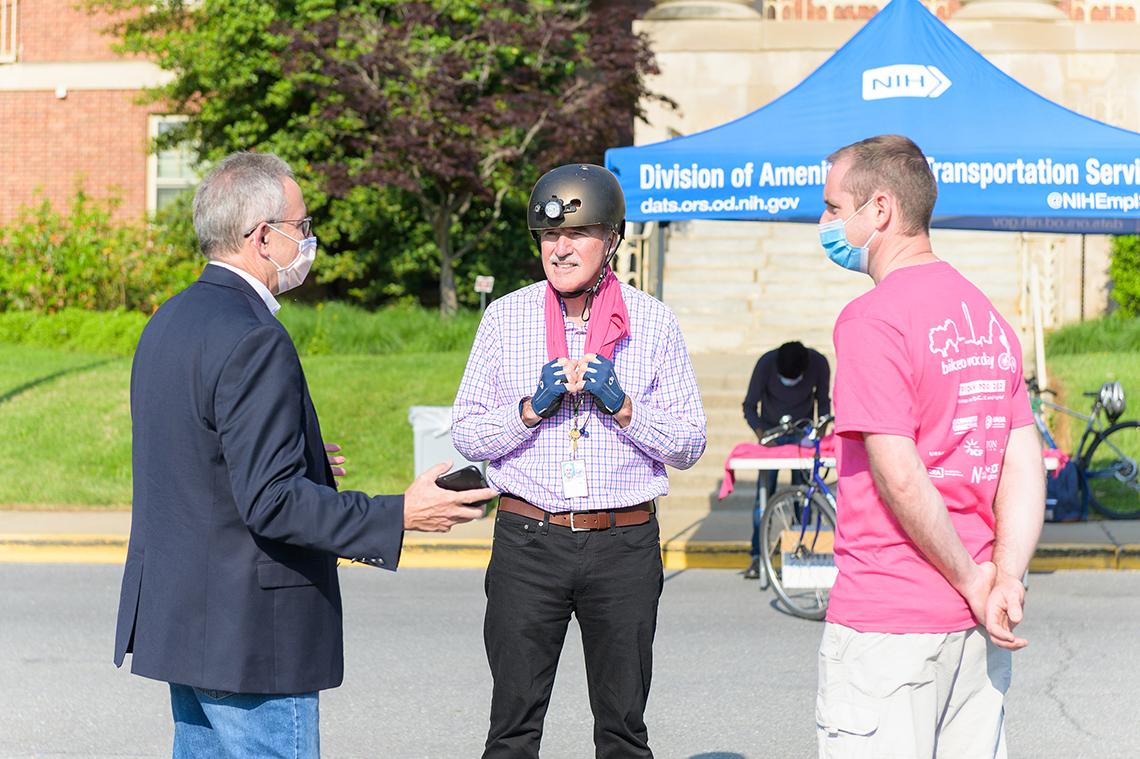Bike to Work Day Back at NIH for 2022

Photo: Marleen Van Den Neste
NIH’s main campus in Bethesda was once again one of nearly 100 pit stops in the Washington, D.C., metropolitan area for this year’s Bike to Work Day, May 20. Forecast to be the hottest day of the year, BTWD dawned clear, but got muggy as thousands around the region pedaled to their job sites.
NIH’s first BTWD observance since 2019—when more than 550 people pre-registered to bike to work on the designated day, this year’s event seemed to be recovering in its own way from Covid-19. Safety precautions canceled the event in 2020 and 2021, interrupting its momentum from previous years. Participation in 2022 was also likely diminished as many employees remain on expanded telework schedules in the wake of the pandemic. Participants’ enthusiasm remained high. They motivated by cycling’s physical and mental health benefits as well as environmental benefits, according to several cyclists at the event.
“We had about 139 riders,” said Frank Velez, NIDDK clinical research informatics analyst and NIH Bicycle Commuter Club (NIHBCC) president. “Our total mileage was 1,422 miles. We had 3 people tie for the longest ride in at 36 miles.”
Riders from 17 institutes/centers, in addition to cyclists representing the Office of the Director, Office of Intramural Training and Education and Office of Research Services, checked in at NIH’s pit stop in front of Bldg. 1. NCI had the highest number of unique commuters. The median commute was 8 miles and the average was 10.
“My commute was about 5 miles,” said NIH acting principal deputy director Dr. Tara Schwetz, who pedaled from D.C. for BTWD. “I met up with Melissa Antman, who is on my team, and we rode most of the way together, going through some of the neighborhoods in Bethesda. We met around 9 a.m., and followed the bike route, so traffic wasn’t really an issue. Last summer, I biked in almost once a week for several months. I may start doing it again since the weather is better.”

Photo: Marleen Van Den Neste
FIC deputy director Dr. Peter Kilmarx, a longtime bicycle commuter, noted the change in his routine over the past 2 years.
“Before Covid-19, I biked every day year round,” he said. “It’s only about a mile from home to work across Old Georgetown Rd. Now I only come in once a week and I usually walk to get more steps, but I was in a hurry Friday, so I biked.”
Since returning to work on site, NIHBCC member Kathy Kranzfelder, director of NIDDK’s Office of Communications and Public Liaison, bikes in once or twice a week from Gaithersburg (32 to 36 miles round trip). She was one of more than 20 NIHBCC members who volunteered to help sign in cyclists, hand out t-shirts and otherwise facilitate riders at the pit stop.
Kilmarx encourages “biking to work every day to improve health, reduce carbon footprint and pollution, relieve the parking burden on campus” and curtail overall traffic congestion in the region.
NIH’ers can find bicycling resources at: https://ors.od.nih.gov/pes/dats/NIHBicycleProgram/pages/default.aspx.
The League of American Bicyclists originated BTWD in 1956 to encourage bicycle commuting as a healthy and safe alternative to driving. NIH’s observance is co-sponsored by NIHBCC and ORS’s Division of Amenities and Transportation Services.—Carla Garnett

Photo: Marleen Van Den Neste










